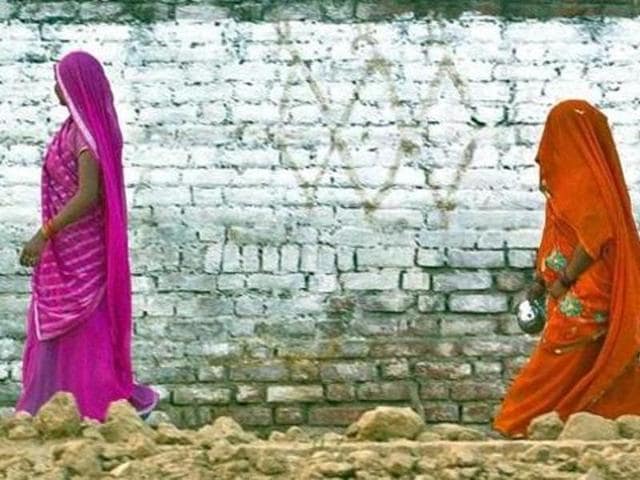Swachh Bharat battles rural India’s belief that open defecation is better
The Modi government’s toilet-building mission has been exceeding targets, but getting people to use them is proving difficult. Assessments show that culturally entrenched habits linked to poor sanitation mean rural households still prefer doing it in the open, despite having access to loos.
The Modi government’s toilet-building mission has been exceeding targets, but getting people to use them is proving difficult. Assessments show that culturally entrenched habits linked to poor sanitation mean rural households still prefer doing it in the open, despite having access to loos.

As India carries out its largest exercise to end open defecation, two surveys conducted to assess the situation show rapid expansion of toilets relative to targets – especially in 300 worst-affected districts. That’s about half of India.
However, usage patterns tell a different story.
Mass open defecation has been linked to the spread of infectious diseases, poor health among children, and even deaths. According to World Bank estimates, losses from poor sanitation shave off about 6% of India’s GDP.
Read| Lack of toilets: ‘Our women are forced to go out in the open’
A state-initiated rapid survey found rural India a big “behavioural” challenge. In the countryside, 52% of the population still defecates in the open. Another ethnographic study by demographers quoted 47% of rural households in five states as saying that they prefer open defecation because it was “pleasurable, comfortable or convenient”.
The NDA government’s Swachh Bharat or Clean India Mission aims to end open defecation by October 2, 2019 – Mahatma Gandhi’s 150th birth anniversary. On paper, the accomplishments look good. In 2014-15, the government built 5.8 million toilets against a target of 5 million, exceeding it by 16%. In 2015-16, 12.7 million loos were built against a target of 12 million. Since the start of the mission in 2014, 21 million toilets were installed in rural areas – covering 53.6% of the population.
However, cultural preferences remain a stumbling block. “We are fully aware of this, and are fine-tuning our monitoring strategy accordingly,” said Ashutosh Ranjan, the coordinator for a “key resource centre” in Bihar’s Araria district.
Read| Swachh Bharat mission needs a people’s push
Apart from Uttar Pradesh, Madhya Pradesh, Rajasthan and Haryana, Bihar shows a “revealed preference” for open defecation, says Dianne Coffey, a demographer who studied defecation habits.
Many considered open defecation as the way to a “wholesome, healthy, virtuous life”, while others said evacuating bowels in the open enabled them to “take in fresh air”, Coffey – who led the study – said.
“The renewed strategy addresses the need for monitoring the outputs (toilets) and outcomes (toilet usage) through key resource centres that help collectors and panchayat (village councils),” an official said.
Read| Over 5 lakh defecate in the open due to lack of toilets in Delhi





